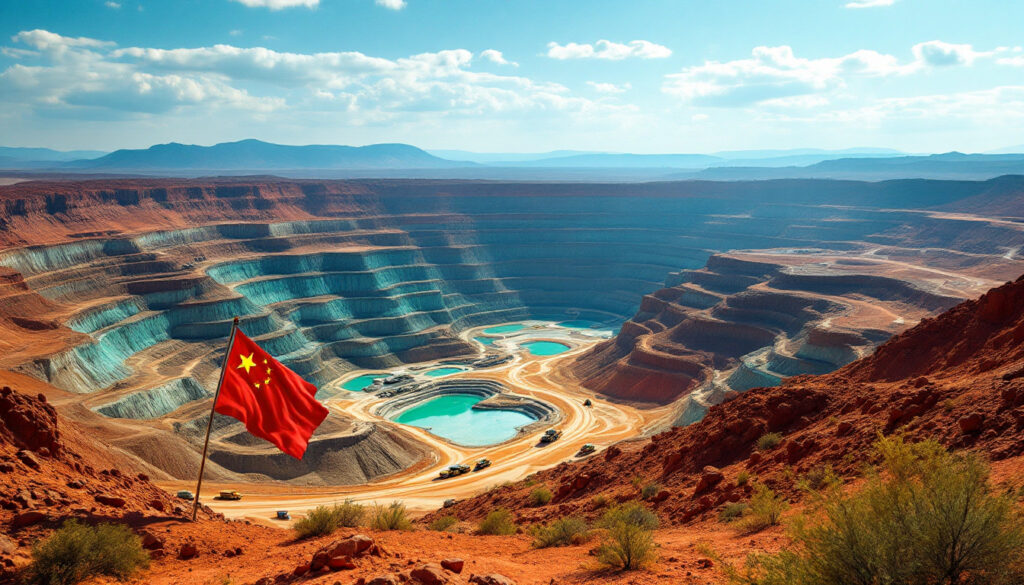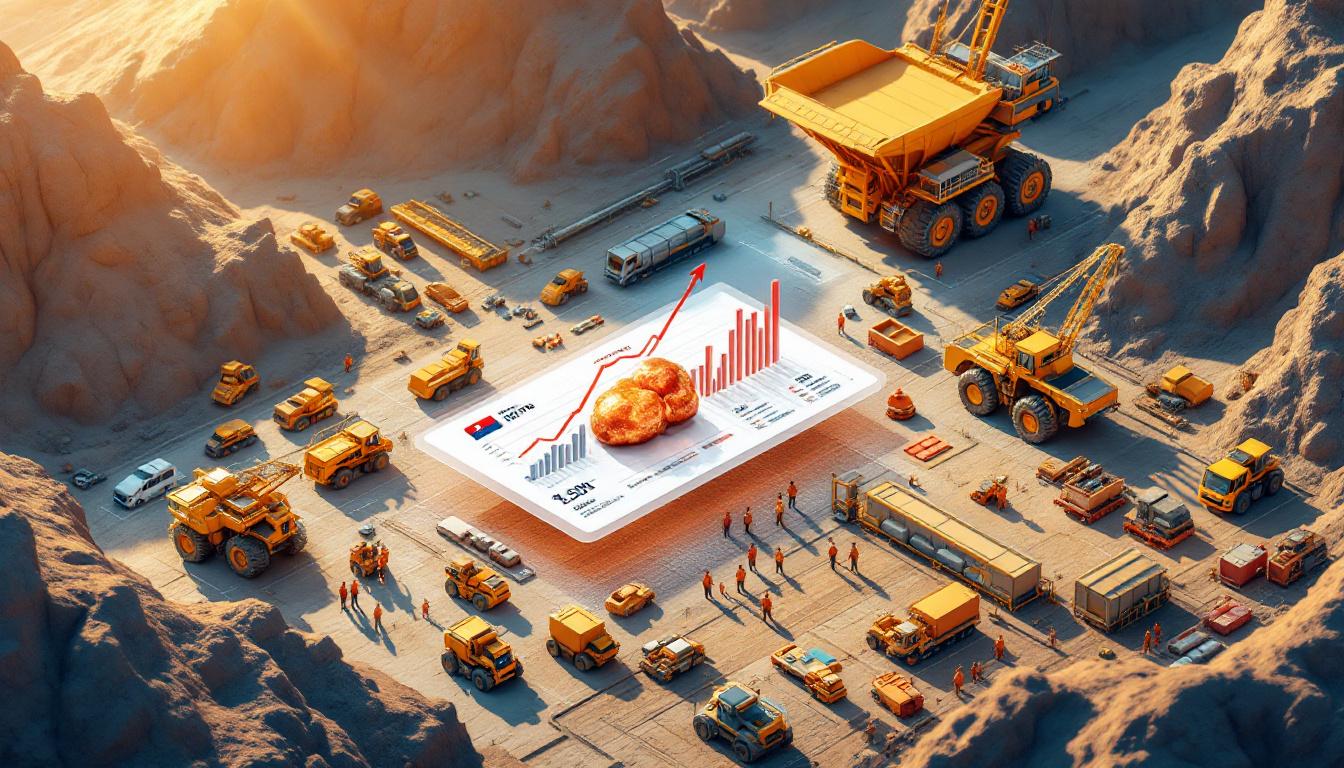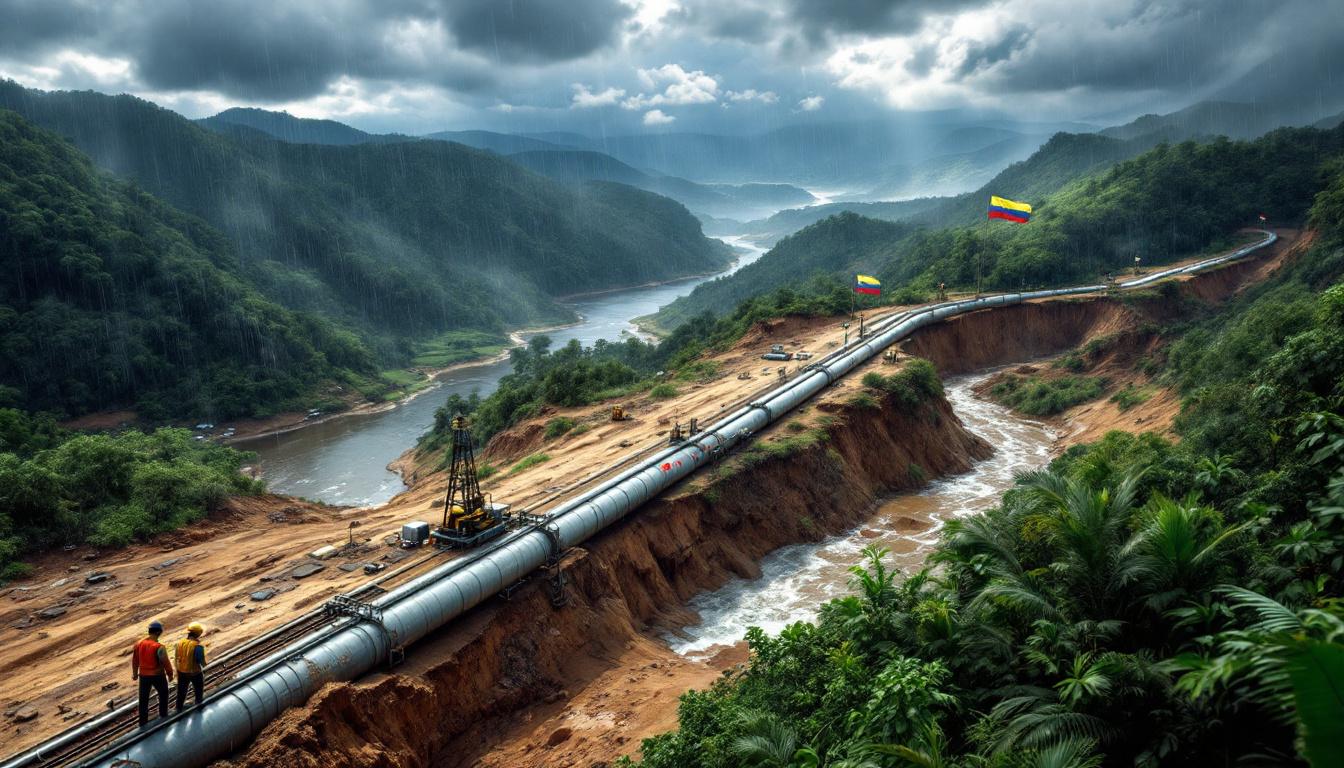Understanding Tariff Impacts on Freeport-McMoRan's Copper Operations
How Are Tariffs Threatening Freeport-McMoRan's US Copper Production?
US Operations at Higher Risk Due to Cost Structure
Freeport-McMoRan's US copper mines operate at approximately three times the cost of its international operations, a disparity driven by lower ore grades, currency-related inflation, and elevated labor expenses. In 2023, the company produced 565,000 tonnes of copper domestically, accounting for 30% of its global output of 1.9 million tonnes. This production stems from seven open-pit mines across Arizona and New Mexico, alongside a single operational smelter in Miami.
The high cost structure places US operations on the upper end of the global cost curve, making them disproportionately sensitive to copper price trends. For instance, a 10% decline in copper prices could render certain US mines unprofitable, jeopardizing nearly 39,000 jobs supported by Freeport's domestic activities.
Dual Threats: Economic Slowdown and Inflation
CEO Kathleen Quirk identifies slowing economic growth and persistent inflation as existential risks to US copper production. "Both slower economic growth and inflation hit our US mines particularly hard because of where we are on the cost curve," Quirk stated, noting that copper smelting dynamics and Freeport's share value have already declined due to trade-related uncertainty.
The COMEX copper price recently exceeded the London Metal Exchange (LME) benchmark by over 10%, reflecting speculative stockpiling ahead of potential Section 232 tariffs. Such distortions strain supply chains and erode consumer confidence, compounding the challenges posed by reciprocal tariffs between the US and China—125% on Chinese imports and 84% on US exports effective April 10, 2025.
What Specific Tariff Measures Are Affecting the Copper Industry?
Current Tariff Landscape
The US has implemented a 125% tariff on Chinese imports, triggering reciprocal 84% tariffs on US goods. A universal 10% tariff on 60 other countries remains paused for 90 days, though copper is currently exempt. A Section 232 investigation into copper's national security implications could introduce additional tariffs, further destabilizing markets.
These measures conflict with the government's goal of increasing domestic critical mineral production, as tariffs risk making US copper mining economically unviable despite its strategic importance.
Short-Term Market Distortions
Anticipating Section 232 tariffs, traders have flooded the US with copper, creating a 10% premium on COMEX prices over LME benchmarks. This arbitrage opportunity has led to supply chain inefficiencies, with the US simultaneously importing refined copper and exporting scrap—41.35% of which went to China in 2024.
Quirk notes that while these flows are speculative and temporary, they exacerbate volatility, deterring long-term copper investment strategies. According to recent economic analysis, these market distortions could persist well into 2026.
How Will Tariffs Impact Freeport's Growth Strategy?
Threatened Expansion Plans
Freeport's plans to expand US production, including a potential Miami smelter upgrade to support the Bagdad project, are now uncertain. "It will certainly slow our copper supply growth—the opposite of our intention to grow production in the US," Quirk warned.
The company, which represents 70% of domestic copper output, had aimed to leverage rising demand from green energy and AI sectors. However, tariff-induced economic uncertainty has already delayed capital expenditure decisions, undermining job creation and supply chain resilience.
Innovation Under Pressure
To circumvent smelting bottlenecks, Freeport is developing advanced leaching technologies to recover more copper from existing stockpiles, particularly at its Morenci mine. The company is also experimenting with vessel-based concentrate leaching, which could bypass traditional smelting methods.
These innovations aim to reduce reliance on costly infrastructure projects, though their scalability remains unproven. Meanwhile, top copper mines insights suggest competitors are facing similar challenges globally.
What Are the Broader Industry Implications of Trade Tensions?
US Copper Production Challenges
The decline of US smelting capacity—from multiple facilities to just two operational sites—highlights structural vulnerabilities. China's aggressive smelter expansion has capitalized on this gap, processing 50% of global copper concentrate.
Quirk argues that rebuilding US capacity without subsidies is impractical, as "private sector [entities] are unlikely to invest in multiyear projects based on tariffs that could change tomorrow." This reality clashes with policymakers' ambitions for self-sufficiency in critical minerals.
Global Supply Chain Considerations
Freeport's international operations in Indonesia, Peru, Chile, and Spain face indirect risks from trade tensions. For example, Chinese tariffs on US scrap could disrupt recycling markets, while Ecuadorian protests at the Cerro Verde mine underscore geopolitical instability.
Quirk emphasizes that copper's "demand fundamentals remain strong," but tariff-related distortions threaten to fragment global supply chains, raising costs for end-users in renewable energy and construction sectors.
How Do Tariffs Align with US Manufacturing Goals?
Policy Objectives vs. Industry Realities
While Freeport supports reshoring manufacturing jobs, Quirk criticizes the lack of nuance in current tariffs: "Even with tariffs on China, certain industries still can't compete." Downstream fabricators oppose cathode import tariffs, fearing reduced competitiveness against subsidized foreign rivals.
The company advocates for targeted measures that address Chinese overcapacity without stifling domestic growth. Recent copper price drops highlight the immediate market response to these policy tensions.
Balancing National Interests with Economic Realities
Freeport's submission to the Section 232 investigation underscores the need for policies that recognize copper's dual role as a critical mineral and globally traded commodity. Quirk warns that "policies moving too quickly for the complexity of this topic" risk alienating allies and destabilizing markets.
For instance, EU carbon border adjustments could penalize US exports if domestic environmental standards lag.
What Does the Future Hold for US Copper Production?
Demand Fundamentals Remain Strong
Copper demand is projected to grow 3.5% annually through 2030, driven by electric vehicles, grid infrastructure, and data centers. Freeport's focus on leaching innovations and recycling partnerships could offset smelting deficits, though these solutions require sustained R&D investment.
The company is also exploring "green copper" certifications to premiumize domestic output. The global copper market outlook remains positive despite short-term volatility.
Economic Warning Signs
A recession-induced price collapse could force Freeport to idle high-cost US mines, undermining decades of strategic planning. Quirk stresses that tariffs must be paired with subsidies and infrastructure funding to ensure viability: "We need a healthy global economy to justify US investments."
With copper prices hovering near break-even levels for domestic operations, the margin for error is rapidly narrowing.
FAQ: Tariffs and Copper Production
How much of US copper production does Freeport-McMoRan represent?
Freeport-McMoRan accounts for approximately 70% of US copper production, operating seven mines and supporting 39,000 jobs.
Why are US copper mines more vulnerable to economic downturns?
US mines operate at three times the cost of international sites due to lower ore grades and higher labor expenses, placing them on the higher end of the global cost curve.
What technological innovations is Freeport pursuing to increase US production?
The company is developing advanced leaching techniques and vessel-based concentrate processing to reduce reliance on smelting.
How do copper tariffs conflict with US critical mineral goals?
Tariffs that suppress copper prices or economic growth could render domestic production uneconomical, counteracting efforts to secure supply chains.
Why hasn't the US built more copper smelters?
Economic inefficiencies and China's smelter subsidies have deterred private investments, leaving the US dependent on two aging facilities.
Ready to Profit from the Next Major Mineral Discovery?
Discover how mining investments can deliver exceptional returns with Discovery Alert's proprietary Discovery IQ model, which instantly notifies investors of significant ASX mineral discoveries and turns complex data into actionable insights. Visit Discovery Alert's dedicated discoveries page to understand why major mineral discoveries can lead to significant market returns and position yourself ahead of the market.




